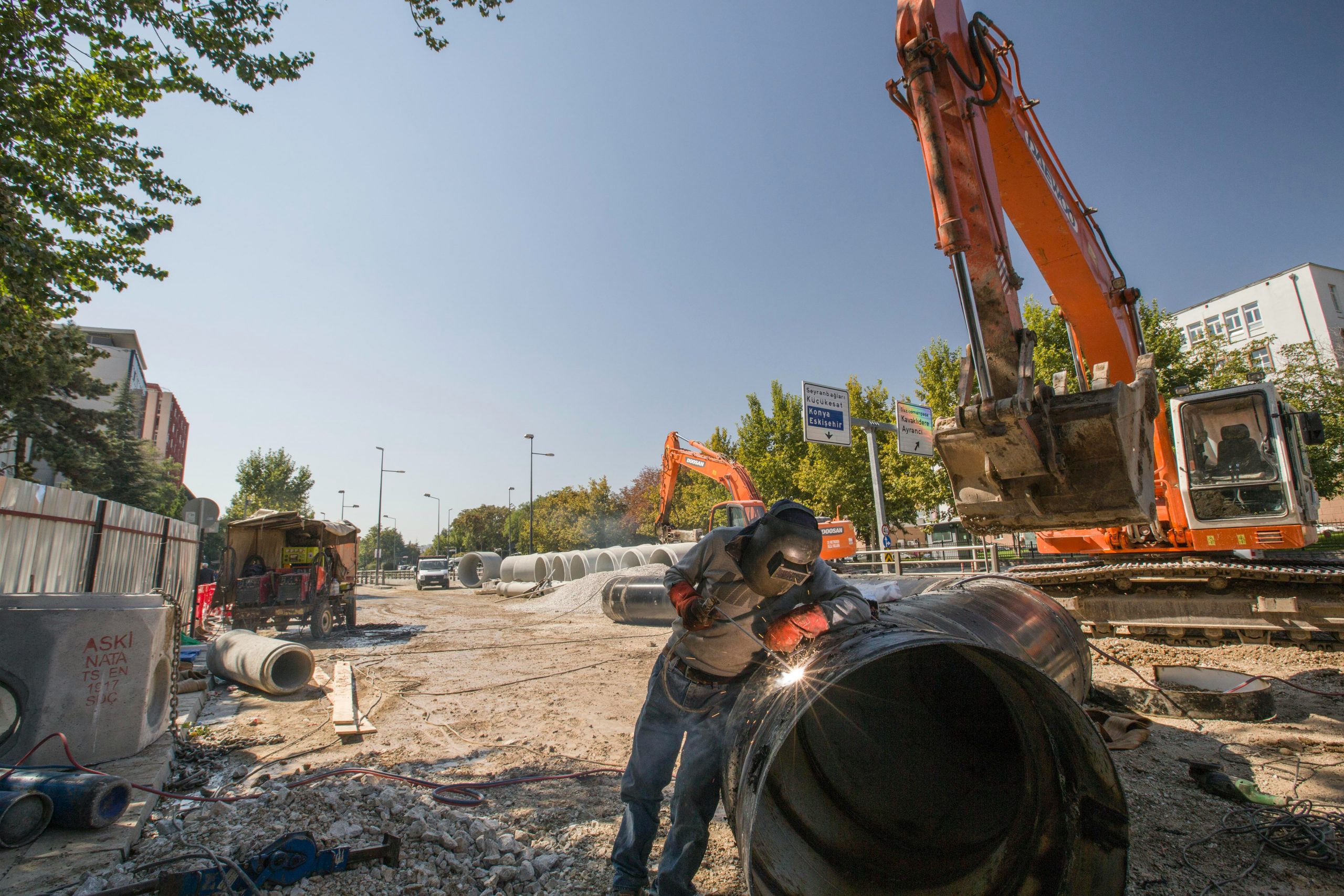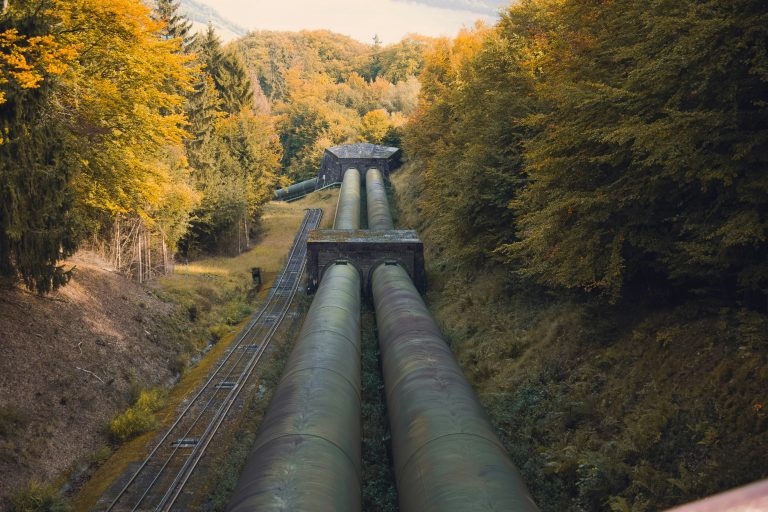- Precision engineering revolutionizes pipeline maintenance, leveraging advanced technology for reliability and efficiency.
- Evolution from traditional manual methods to modern, proactive approaches enhances safety and reduces downtime.
- Key components include advanced inspection tools, high-precision repair equipment, and remote monitoring systems.
- Advanced technology enables improved defect detection, proactive maintenance, and operational efficiency optimization.
- Future innovations focus on robotics, data analytics, and adaptation to evolving industry needs for sustained improvement.
Precision engineering has become the cornerstone of modern pipeline maintenance, revolutionizing how people monitor, repair, and optimize these vital infrastructure networks. Advanced technology, from sophisticated inspection tools to robotic repair systems and remote monitoring capabilities, has ushered in a new era of efficiency and reliability. This article delves into the transformative impact of precision engineering on pipeline performance. By exploring the evolution of maintenance practices, critical components of advanced technology, and real-world applications through case studies, it uncovers how these innovations enhance operational efficiency and ensure the safety and longevity of pipeline networks worldwide.

The Evolution of Pipeline Maintenance
In pipeline maintenance, a significant evolution has transpired, transitioning from traditional methodologies to modern, precision-engineered approaches. Historically, pipeline maintenance relied heavily on manual inspection processes and reactive repair methods, often leading to costly downtime and safety hazards. However, advanced technology has catalyzed a paradigm shift in monitoring, maintaining, and repairing pipelines.
Traditional Methods
Traditionally, pipeline maintenance involved periodic visual inspections and physical assessments, supplemented by occasional repairs as issues arose. This reactive approach often resulted in unexpected failures, leading to significant disruptions and environmental risks. Moreover, the limitations of manual inspection techniques meant that potential problems could go undetected until they escalated into critical issues.
Modern Methods
In contrast, modern pipeline maintenance embraces precision engineering, leveraging cutting-edge technologies to proactively monitor and address potential vulnerabilities. Advanced inspection tools, such as smart pigs equipped with sensors and imaging capabilities, enable comprehensive assessments of pipeline integrity without the need for costly and time-consuming excavation. Moreover, robotic repair systems have revolutionized how repairs are conducted, allowing for precise interventions while minimizing disruption to operations.
Precision Engineering
The shift towards precision engineering has also addressed numerous challenges inherent in traditional maintenance practices. By implementing advanced technology, operators can detect defects and vulnerabilities early, enabling timely intervention to prevent catastrophic failures. Furthermore, the ability to collect real-time data and perform predictive analytics enhances decision-making processes, optimizing maintenance schedules and resource allocation. Overall, the evolution towards precision engineering represents a significant step forward in ensuring pipeline networks’ reliability, safety, and efficiency.
Key Components of Precision Engineering
Key components of precision engineering in pipeline maintenance encompass advanced inspection tools, high-precision repair equipment, and remote monitoring and control systems, each playing a pivotal role in optimizing performance and reliability.
Inspection Tools
Advanced inspection tools revolutionize the way pipelines are assessed for integrity. To facilitate this, you should use smart pipeline pigging equipment to prevent future issues. Smart pigs, equipped with sensors and imaging technology, traverse the pipeline, accurately detecting defects, corrosion, and anomalies. Drones provide aerial surveillance, offering a comprehensive view of pipeline infrastructure in remote or inaccessible areas. Real-time data collection and analysis capabilities enable operators to swiftly identify potential issues and prioritize maintenance efforts, minimizing risks and optimizing resource allocation.
Repair Equipment
High-precision repair equipment, notably robotic repair systems, streamline maintenance processes with unparalleled efficiency and accuracy. These automated systems can navigate pipelines, performing intricate repairs with precision while minimizing disruption to operations. By leveraging robotic technology, operators can address defects and vulnerabilities promptly, mitigating the risk of downtime and costly repairs.
Monitoring and Control
Remote monitoring and control systems are crucial in enhancing pipeline management practices. Remote monitoring enables operators to oversee pipeline operations in real time, detecting abnormalities and deviations from normal operating conditions. Additionally, remote control capabilities allow immediate response to emergencies, such as leaks or ruptures, enhancing safety and minimizing environmental impact. By harnessing the power of remote technologies, operators can ensure the integrity and efficiency of pipeline networks while optimizing maintenance strategies for maximum effectiveness.
The Impact of Advanced Technology on Pipeline Performance
Advanced technology has significantly transformed pipeline performance, offering improved detection capabilities, enhancing maintenance practices, and optimizing operational efficiency. One of the most notable impacts of advanced technology is the improved detection of defects and vulnerabilities within pipelines. With sophisticated inspection tools like smart pigs and drones, operators can identify potential issues early on, minimizing the risk of leaks and failures. Real-time data collection and analysis enable prompt intervention, preventing minor problems from escalating into major incidents.
Enhance Maintenance Practices
Furthermore, advanced technology enables enhanced maintenance practices, shifting from reactive to proactive strategies. Predictive maintenance techniques utilize data analytics to forecast equipment failures, allowing operators to schedule maintenance activities before issues arise. This proactive approach reduces downtime and prevents costly repairs, improving overall reliability.
Optimize Operational Efficiency
In addition, advanced technology is crucial in optimizing operational efficiency within pipeline networks. By streamlining workflow processes through automation and digitalization, operators can maximize throughput while minimizing resource consumption. Remote monitoring and control systems enable real-time oversight of operations, facilitating swift adjustments to optimize performance.
Revolutionize Maintenance Practices
Overall, the impact of advanced technology on pipeline performance is profound, revolutionizing maintenance practices and operational efficiency. Through improved defect detection, enhanced maintenance strategies, and optimized workflows, pipelines can operate more reliably and efficiently, ensuring the integrity of critical infrastructure networks.
Future Directions and Innovations
The future of precision engineering in pipeline maintenance holds promising innovations that will further enhance reliability, efficiency, and safety.
Robotics and Artificial Intelligence
Emerging technologies are poised to revolutionize pipeline maintenance practices. Advancements in robotics and artificial intelligence promise more sophisticated inspection and repair capabilities. Autonomous drones with advanced sensors could provide even more precise and comprehensive pipeline assessments. At the same time, robotic repair systems may become even more efficient and versatile, capable of addressing a more comprehensive range of issues with minimal human intervention.
Data Analytics
Furthermore, the future of pipeline maintenance lies in harnessing the power of data analytics and predictive maintenance. As data collection and analysis capabilities continue to improve, operators will have access to more actionable insights into the condition of their pipelines. Advanced algorithms will enable predictive maintenance strategies to become even more accurate and proactive, allowing operators to anticipate and prevent failures before they occur, thus reducing downtime and maintenance costs.
Adapt and Evolve
Moreover, the pipeline industry will continue to adapt and evolve to meet the changing needs and challenges of the future. This includes staying abreast of regulatory requirements, environmental considerations, and emerging technologies. Continuous improvement will be essential, with operators seeking new methods and technologies to optimize performance and ensure the integrity of pipeline networks in an ever-changing landscape.

Precision Engineering
In summary, the future of precision engineering in pipeline maintenance is marked by innovation, data-driven decision-making, and a commitment to continuous improvement. By embracing emerging technologies, advancing data analytics capabilities, and remaining adaptable to industry needs, pipeline operators can ensure critical infrastructure networks’ continued reliability and efficiency for years to come.
In conclusion, precision engineering represents a pivotal advancement in the maintenance and management of pipeline networks facilitated by integrating advanced technology. Using sophisticated inspection tools, high-precision repair equipment, and remote monitoring systems, pipelines can operate with unprecedented reliability, efficiency, and safety. The transformative impact of precision engineering is evident in its ability to detect defects early, optimize maintenance practices, and streamline operational workflows. As people look towards the future, continued innovation and adaptation to emerging technologies will be essential in ensuring pipeline networks’ continued performance and integrity, solidifying their role as vital components of modern infrastructure.

